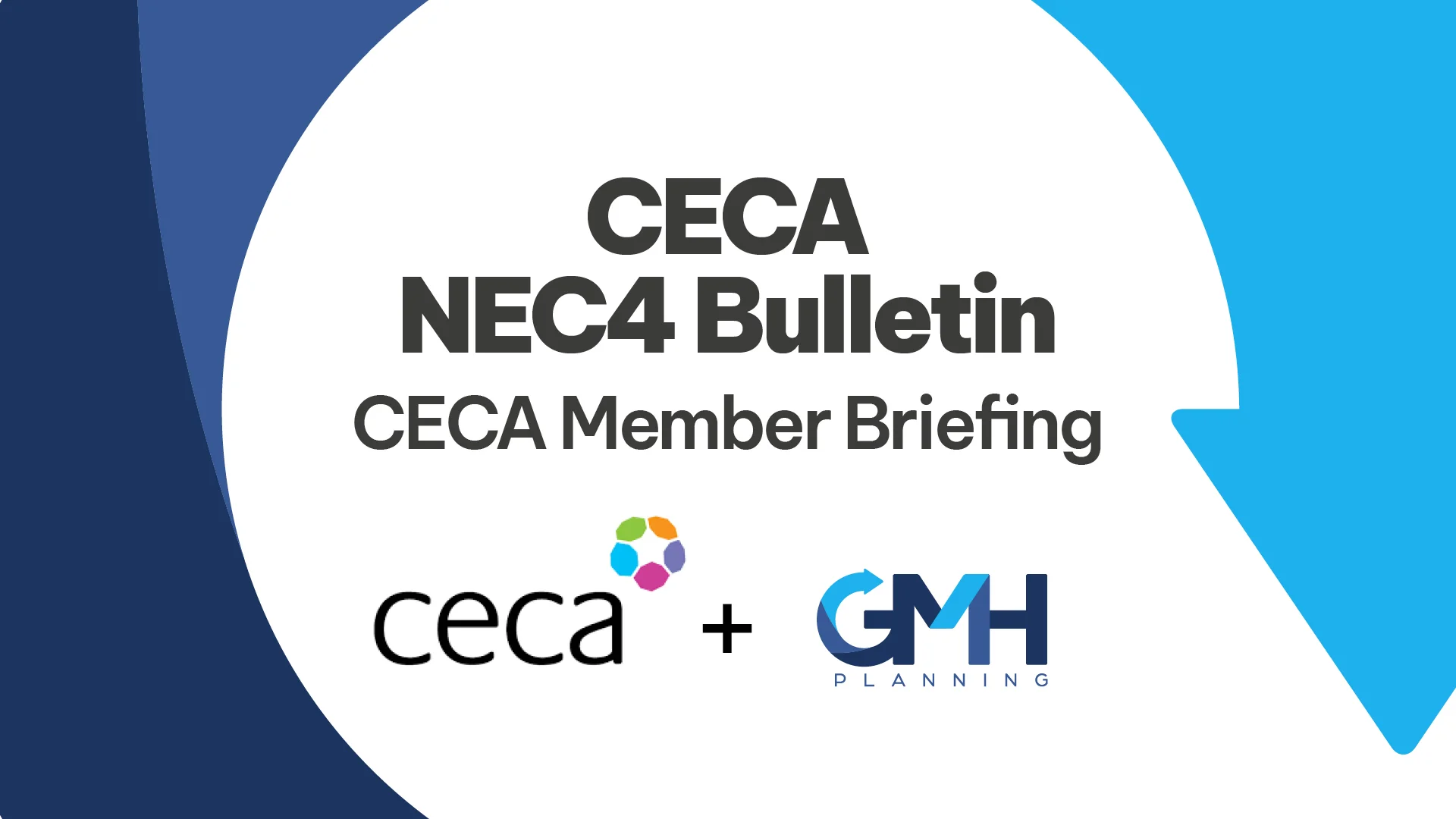
Under the Engineering and Construction contract (and indeed other contracts within the NEC family), X20 Key Performance Indicators (KPIs) allow a Client to create performance measurements to encourage a Contractor to act or perform in a certain way to help achieve wider Client objectives.
In a competitive procurement process a Contractor is required to consider their obligations and potential entitlement in accordance with the contractual rules. Therefore, KPIs if chosen carefully could tailor the nature of these rules to achieve a wider overall value and benefit to the Client. They can encourage a Contractor to perform in a way that they may not otherwise be incentivised to do if they were purely following the rules and risk profile of standard contract wording. Generally, they will be determined by the Client at tender stage but sometimes the Contractor can be invited to suggest some during the tender process to be included within the contract.
Contract Data part 1
If a Client wishes to include KPIs then they will state X20 as one of the secondary options. It is also then a requirement to include an ‘Incentive Schedule’ that will be included in the tender documents and whoselocation will be identified in the contract data. Contract data will also state how often the Contractor will report against these KPIs i.e. they should be reported against every month/three months/six months. The intervals should be sufficiently short to allow corrective measures to be put in place to improve performance.
Option X20 clauses
There are only five contractual clauses within section X20 (X20.1-5). They confirm that the Incentive Schedule is the one stated in contract data i.e. exists at the point the contract is signed. The Contractor is to report its performance against each of the KPIs at the interval stated in the contract data, including a forecast final measurement against each indicator (where applicable). If a KPI is not forecasted to achieve the target stated in the Incentive Schedule, the Contractor needs to submit to the Project Manager their proposals for improving performance. The Contractor is paid the amount stated in the Incentive Schedule when a KPI is achieved. The Client may add a KPI and associated payment to the Incentive Schedule but may not delete or reduce a payment already stated in the Incentive Schedule.
Positive or negative incentives?

It is very clear in the language of the clauses that these are intended to be a positive incentive, i.e. ‘achieve this measure and you will be paid additional money’. The wording in the guidance notes’ indicates that the intention of KPIs is to “encourage rather than coerce” the Contractor to meet Client objectives. The intent should be that both Parties should benefit when an objective is met. However, it is not uncommon for a Client to set a KPI that introduces a “achieve this measure otherwise you will be penalised in some way” scenario. This could be a monetary penalty, a reduction in fee percentage or, under a framework, may impact their ability to be awarded further works. It is generally considered (from existing research) that positive incentives achieve better outcomes and behaviours than negative ones. However, if a Client wishes to create a situation where the Contractor may be penalised in some way, they will need to understand this at tender stage and price any such risk accordingly or may decide not even bid.
Measurable and achievable
Any Key Performance Indicator should be very clear in its description as to what is to be achieved. It should be measurable as to whether that objective has been met, and also be achievable in the first place as otherwise there will be no attempt made to meet it. For instance, setting a KPI requiring the recruitment of resource from within specified set of post codes when the availability of resource within that catchment, or the nature of the skill sets required, or the duration of the project may realistically make this KPI unachievable.
Should encourage the right behaviours?
Any Key Performance Indicator should be carefully considered to ensure it encourages the right behaviours. There is little value to a Client in including a set of KPIs that will incur additional cost that do not add the value they are looking for.
Payment

The Contractor should be paid the amount due against each KPI the following month after it has been achieved. These payments are not part of Defined Cost or the Price for Work Done to Date, so should not be included in the calculation for share percentage under option C/D target cost options.
Regular review
Practically speaking (rather than contractual) there should be engagement between the Parties as to whether the Key Performance Indicators are achieving their objectives. Like anything in the contract and by agreement elements can be changed when it is confirmed in writing and signed by both Parties. A Client may add a Key Performance Indicator during the life of a project and an associated payment to the incentive Schedule but may not delete or reduce a payment already stated.
Topics that KPIs could be written around
There are no specific KPIs included in the standard contract wording for a Client to choose from, so these will be bespoke for each project/Client. They can be based upon more specific contractual aspects, or more general issues such as quality or safety.
The assessment process to determine whether a KPI has been achieved and the mechanisms to be used to allow the management or mitigation of the outcomes will need to be clearly identified. Some will be straight forward to assess but others may involve a degree a subjectivity and failing to initiate a consistent, fair and robust culture around this process will lessen the effectiveness of the KPI. It would be beneficial for the Client to consider initiating their own set of 360-degree KPIs around some aspects of the contract that might impact on the specified KPI outcomes that the Contractor is being assessed on.
Listed below are some examples or themes that could be considered and the challenges that might arise around them:
Programme: A cumulative score being given for having an Accepted Programme every period with the score relating to a bonus. Rewarding the achievement of certain programme milestones that are important to the project. This would need the proactive support of the Project Manager to achieve, where they make clear the reasons if they are ‘rejecting’, so that the Contractor knows exactly what they need to do in order to resubmit and get it accepted within that same period.
Early Warnings: Here is a topic where there is probably not a useful KPI. There should not be one for simply how many early warnings are notified as that could encourage irrelevant or futile ones. There is no relevant corelation for the number of early warnings and compensation events. For example, there have been KPIs on projects where a high number of early warnings compared to compensation events was scored negatively as they were viewed as a waste of time (missing the point they could well have avoided a resultant compensation event!). Maybe a score for having regular early warning meetings is the only relevant indicator that would be useful.
Compensation Events: Potentially one of the most significant impacts on a Contractor’s cash flow results from a failure to get CE’s agreed and paid, particularly for lump sum (option A or B) contracts. This again is an area where any KPI would need to potentially consider/ apply to all parties playing a part.
There could be a KPI set up that scores the Contractor’s ability to follow the contractual timescales for producing quotes within (to encourage the timescales to be followed).
If there were to be a KPI that compared original compensation event quotation value with the final agreed value to be used as an incentive in the development of quotes that would attain an earlier PM acceptance, it would clearly need to factor in the Project Manager assumptions and developing awareness around the cost and risk profile associated with the CE process itself.
Quality: Something around the number of defects and/or non-conformances i.e. number of/speed in which they are closed out; scoring high on some kind of wider quality audit; tracking levels of material wastage.
Innovation: Number of proposed value engineering or X21 Whole Life Cost ideas that become implemented.
Safety: Low number of reportable events or accidents, rewarding the period (working hours) since the last reportable incident.
Environmental Measures: scoring to achieve performance around environmental factors. This could be as well as, or instead, of having X29 which is a specific key performance relating to ‘Climate Change’.
Feedback: Scoring high on a monthly Project Manager audit. Low number of complaints or high number of positive reports when interfacing with public and/or other third parties.
Supply chain: evidence of prompt, fair payment and timely agreement of compensation events.
Summary
Key Performance Indicators exist to encourage and compare performance against set objectives. They should be designed to incentivise positive cultures and behaviours. Whoever generates them should consider what behaviour/objective is trying to be achieved and then produce a clear, achievable, and measurable KPI that will encourage that behaviour to happen. They should bring a positive benefit to all parties and all parties have a role in making them achievable.

